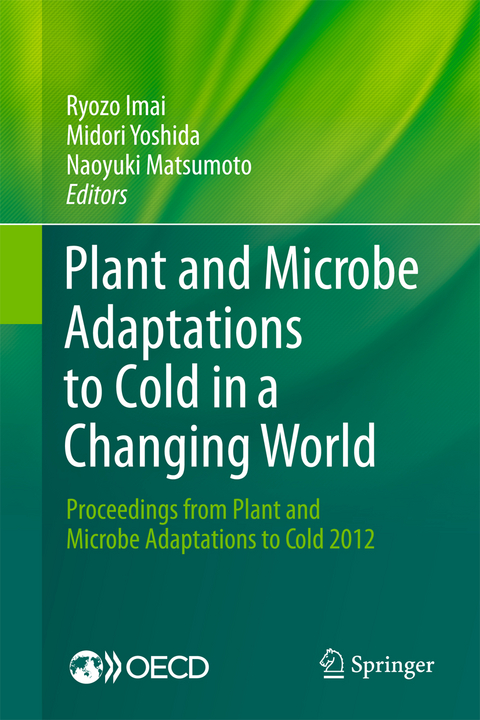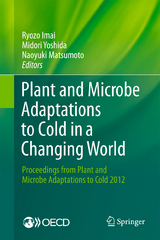Plant and Microbe Adaptations to Cold in a Changing World
Springer-Verlag New York Inc.
978-1-4614-8252-9 (ISBN)
Dr. Ryozo Imai Crop Breeding Research Division Hokkaido Agricultural Research Center, NARO Dr. Naoyuki Matsumoto Silviculture & Forest Ecology Studies Graduate School of Agriculture, Hokkaido University
1. Global change in winter climate and agricultural sustainability.- 2. Soil freezing dynamics in a changing climate: implications for agriculture.- 3. Winter climate change and ecological implications in temperate systems.- 4. Possible change of water and nitrate cycles associated with the frost-depth decrease under climate change.- 5. Soil Frost Control: Its Application to Volunteer Potato Management in a Cold Region.- 6. Climatic and physiological background of ice encasement damage of herbage plants.- 7. NO, antioxidants and metabolites as key players in plant cold acclimation.- 8. The function and evolution of closely related COR/LEA (COld Regulated/Late Embryogenesis Abundant) proteins in Arabidopsis thaliana.- 9. 3D Reconstruction of Frozen Plant Tissue: a unique histological analysis to image post-freeze responses.- 10. Post-transcriptional and post-translational modifications controlling cold response.- 11. Cold shock domain proteins in Arabidopsis: functions in stress tolerance and development.- 12. Regulation of RNA metabolism in plant adaptation to cold.- 13. Protein Phosphorylation Network in Abscisic Acid Signaling.- 14. Using synchrotron FTIR and confocal cryomicroscopy to explore mechanisms of cold acclimation and freezing resistance using a single cell layer of Allium fistulosum L..- 15. Supercooling-Facilitating Hydrolyzable Tannins Isolated from Xylem Tissues of Cercidiphyllum japonicum.- 16. ICE1, a transcription factor involved in cold signaling and tolerance.- 17. Breeding for improved winter survival in forage grasses.- 18. Molecular changes in recurrently selected populations of forage legumes.- 19. Abiotic stress signal network with expression QTLs for cold-responsive genes in common wheat.- 20. Molecular analysis of fructan metabolism associated with freezing tolerance and snow mold resistance of winter wheat.- 21. Do growth kinetics of snow-mold fungi explain exponential CO2 fluxes through the snow?.- 22. Change in Snow Mold Florain Eastern Hokkaido and its Impact on Agriculture.- 23. Phytopathogenic fungi and fungal-like microbes in Svalbard.- 24. Ecological Strategies of Snow Molds to Tolerate Freezing Stress.- 25. Snow mold fungi in Russia.- 26. Snow moulds in a changing environment - a Scandinavian perspective.- 27. Mechanisms of snow mold resistance in wheat.- 28. Activating Disease Resistance in Turfgrasses Against Fungal Pathogens: Civitas and Harmonizer.
| Zusatzinfo | 66 Illustrations, color; 33 Illustrations, black and white; XIX, 352 p. 99 illus., 66 illus. in color. |
|---|---|
| Verlagsort | New York, NY |
| Sprache | englisch |
| Maße | 155 x 235 mm |
| Themenwelt | Naturwissenschaften ► Biologie ► Botanik |
| Naturwissenschaften ► Biologie ► Genetik / Molekularbiologie | |
| Naturwissenschaften ► Biologie ► Mikrobiologie / Immunologie | |
| ISBN-10 | 1-4614-8252-6 / 1461482526 |
| ISBN-13 | 978-1-4614-8252-9 / 9781461482529 |
| Zustand | Neuware |
| Haben Sie eine Frage zum Produkt? |
aus dem Bereich




